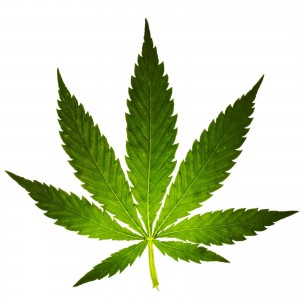 I’ll be pre-filing a bill this year to differentiate and legalize the crop of industrial hemp. This is a cousin to marijuana that does’t have the THC associated with marijuana. I’m sure I’ll get blamed for trying to legalize pot, so let’s see the rumors fly.
I’ll be pre-filing a bill this year to differentiate and legalize the crop of industrial hemp. This is a cousin to marijuana that does’t have the THC associated with marijuana. I’m sure I’ll get blamed for trying to legalize pot, so let’s see the rumors fly.
Brief History of Industrial Hemp
Hemp was a major crop in Kentucky up until World War II. Shortly thereafter, the nylon industry successfully lobbied to outlaw the crop, linking it to marijuana simply because it is from the same botanical family. However, to be clear, hemp is basically free of the psychoactive properties found in marijuana. The United States is the only industrialized nation that does not allow production of industrial hemp.
Products Manufactured from Industrial Hemp
Fuel
Cattle feed
All textiles
Apparel
Animal bedding
Industrial hemp could be an alternative to fiberglass, carpet and upholstery
Paper (Declaration of Independence and Bill of Rights were written on hemp paper; could replace trees as a major source of paper, which would be good for the environment)
Lotion
Cosmetics
Industrial hemp is a renewable, sustainable, environmentally-conscious product that can be made into diesel fuel and plastics
Auto parts
Biofuels
Potential Economic Benefit to Kentucky
Based on a UK study from more than a decade ago, if Kentucky again became the main source for certified industrial hemp seed in the United States, the economic impact would be more than $1,300,000 in worker earnings.
The total economic impact in Kentucky, assuming one industrial hemp processing facility locating in Kentucky and selling certified seed to other growers, would be more than 300 full-time equivalent jobs and more than $6,700,000 in worker earnings.
If two processing facilities were established in Kentucky, industrial hemp would have an economic impact of roughly 537 fulltime equivalent jobs and more than $12,100,000 in worker earnings.
If one processing facility and one industrial hemp paper-pulp plant were established in Kentucky, industrial hemp would have an economic impact of 771 full-time equivalent jobs and $17,600,000 in worker earnings.
Benefits to Farmers
Studies have shown that hemp could be at least the third most profitable crop in Kentucky.
Kentucky could capture a significant share of the industrial hemp industry.
First, hemp meets the needs of Kentucky’s horse industry by providing affordable animal bedding. Second, Kentucky’s long growing seasons and appropriate soils make industrial hemp profitable. Third, if Kentucky becomes the first state to legalize industrial hemp, it will have a long-term advantage over other states in establishing the industrial hemp industry.
Kentucky tobacco has been under assault for years. Tobacco continues to face greater taxation and regulation. New kinds of industries need to be developed in these agricultural counties.
Another by-product is that when crops are rotated on acreage that has grown industrial hemp in the previous year, crop yield for the new crop can increase 10 to 15 percent..
Hemp v. Marijuana: The Great Misperception
With its psychoactive properties less than one percent, industrial hemp is a plant that is basically free of the key chemical found in marijuana. Therefore, one cannot get high from industrial hemp. It has often been said that you would have to smoke a football field of hemp to get a headache.
In the past, law enforcement has argued that legalizing hemp would make it more difficult to find and eliminate marijuana because the plants look similar. However, statewide hemp production will be a nightmare for marijuana growers. Studies at Indiana University indicate that industrial hemp would cross-pollinate and ruin any marijuana in its vicinity. The marijuana plant becomes seedy and unmarketable and the hemp drastically lowers the THC in the marijuana. Therefore, it would make no sense to grow hemp and marijuana side-by-side. Additionally, hemp and marijuana are distinguishable to the trained eye. Hemp is much taller, has less foliage and is grown close together. Marijuana is a shorter plant with a great deal of foliage and is planted farther apart.


comments